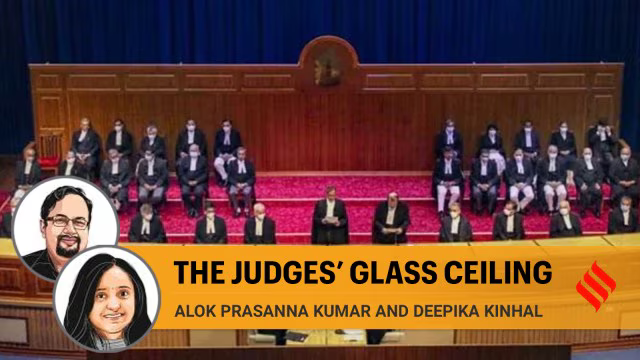
Courts of the Future
Building accessible and efficient courts together with the public
Background
Over the last decade, the eCourts Mission Mode Project (“eCourts Project”) under the aegis of the eCommittee of the Supreme Court (“eCommittee”) has steered the integration of Information and Communication Technology (ICT) with judicial processes to create the court system that we see today. In its first phase, the eCourts Project worked towards procuring and installing computer systems and peripherals across 13,500 courts, enabling network connectivity, digitising case records and installing case management systems. The second phase utilised this infrastructure to create systems and services for litigants, lawyers, judges and Registry officials. Overall, the eCourts Project has thus far enabled the introduction of technological innovations that have facilitated better access to justice and augmented the efficiency of the courts.
For Phase III of the eCourts Project, the eCommittee has constituted a sub-committee to which it invited experts from various organisations to assist in the mammoth task of drawing up a vision document to transform Indian judiciary through technology. Dr. Arghya Sengupta, Research Director at Vidhi, was one of the invited members to this sub-committee. Over the course of the last several months, through a consultative process involving technology experts, High Court judges, Registrars in charge of computerisation and IT, and several other stakeholders within and outside the system, the sub-committee has formulated the draft Vision Document, which has now been published in the public domain for feedback.
Summary of the Phase III Vision
Borrowing from the lessons that the judiciary learned during its earlier two phases, the vision for a post-Covid judiciary is to build a system which is scalable, evolutionary and interoperable with other public systems. The Vision Document attempts to transform the judiciary and prepare it for the future. Towards this endeavour, the document suggests that the judiciary:
- Adopt a platform approach to:
- design services and processes with the primary goal of ease of access and use for lawyers, litigants, judges, Registry and civil society
- enable and support participation from different stakeholders in the ecosystem to create and adopt these services
- adopt a design that is evolutionary and customisable by design (in contrast to monolithic), and
- enable seamless collaboration across all arms of the justice system including legal aid authorities, prisons, police, etc.
- Introduce effective grievance redressal for all kinds of users (e.g., metrics to monitor progress, validation of data, seeking and responding to stakeholder feedback)
- Identify and assign accountability amongst relevant stakeholders to reduce time spent by judges in non-judicial roles relating to e-courts, involve dedicated experts in relevant fields (technology, process re-engineering, design, communication etc.) while retaining judiciary’s independence and oversight.
The Vision Document also identifies potential incentives and benefits across every user of the judicial system as follows:
| SNo. | User | Benefits |
| 1. | Citizens | A range of services would be available for better litigant experience including smart scheduling, online digital filing and configuring different mediums for hearings. Accessibility will be the key focus by ensuring orders are available in regional languages. To reduce litigation costs, digital hearings would be encouraged. To increase transparency and repose trust in the system, live streaming of cases and open data would be institutionalised. |
| 2. | Judges | Judicial process will be streamlined through availability of data, information and support through a unified digital platform. A judge’s time will be prioritised and efficiently utilised using tools like smart scheduling and facilities to search, track and index digital documents, that will make it easier to access facts and legal precedents in real-time. |
| 3. | Court Staff | There will be a reduction in the staff’s dependence on physical records, optimisation work hours and minimisation of the risk of errors through automation of processes for scrutiny and review of filed documents. Through smart templates for orders and case management systems workload of court staff will be significantly reduced. |
| 4. | Community | The system will benefit from the data visibility which allows for targeted interventions and efficient resource allocation by the judiciary. Data generated by the system will help inform better laws and procedures. Minimising paper based processes will bring a significant reduction to the environmental costs of the judicial and legal system.There will be increased security and minimal time and costs of moving physical documents from one court to another |
For driving a large and complex initiative such as the eCourts Project, it is paramount that the challenges in the current institutional structure are identified. This vision document identifies the need for building institutional capacity to effectively design and rapidly roll out the platform and to achieve and sustain high levels of reliable performance on an ongoing basis. Towards this, an interim framework for a smooth transition to Phase III and long-term structure for development and adoption of digital infrastructure is proposed.
Public Consultation and Feedback
For the first time since the inception of the eCourts Project, a vision document has been opened up for public consultation and feedback. This should be seen as a welcome sign of the judiciary opening its doors to its multifarious users for building together an accessible and efficient courts of the future.
Any interested person can give their feedback after a perusal of the document which is uploaded here and here. The timeline for providing feedback ends by 21st May 2021.
Vidhi Centre for Legal Policy has partnered with Civis to collate the feedback from the document which can be accessed through this link here.



